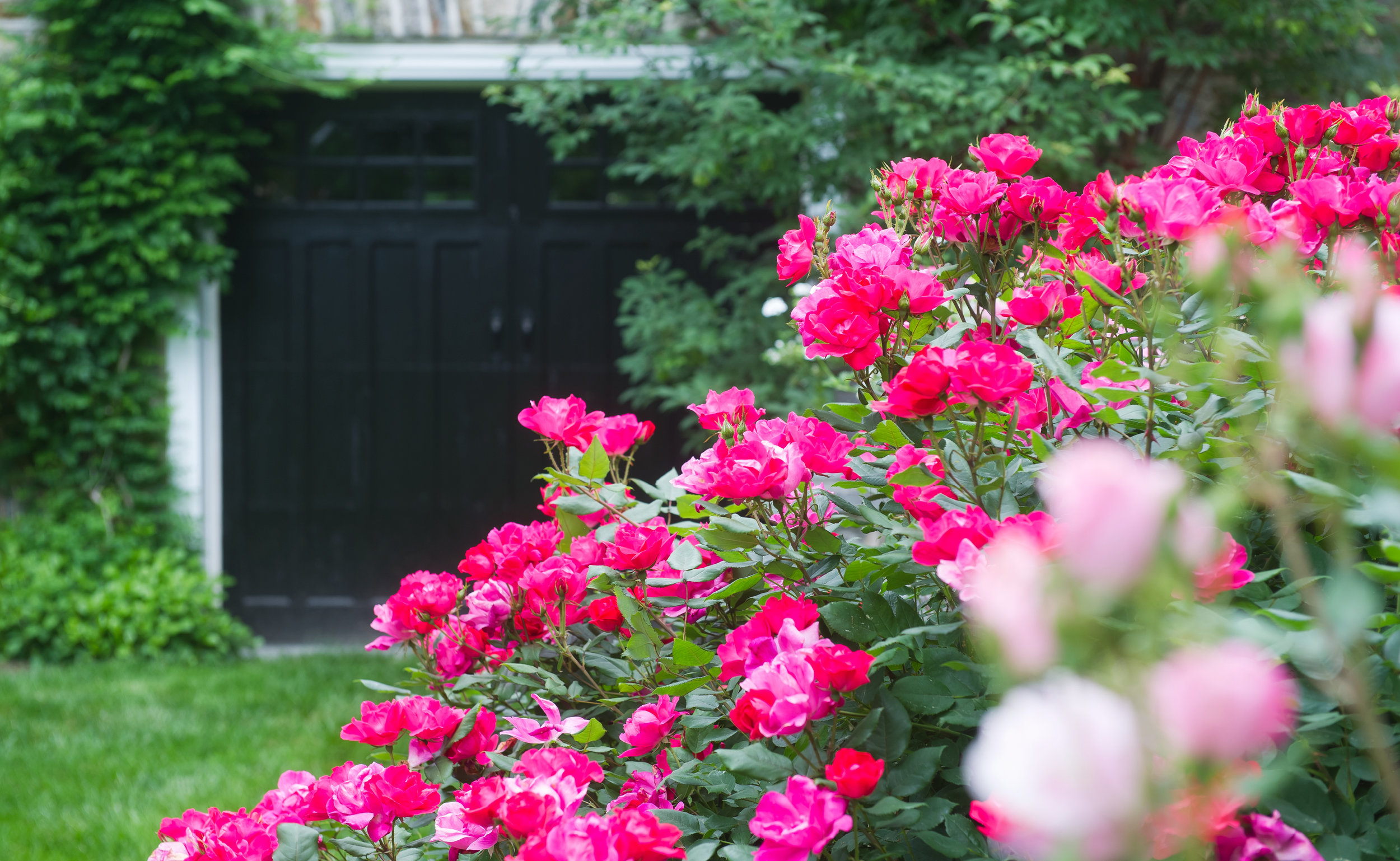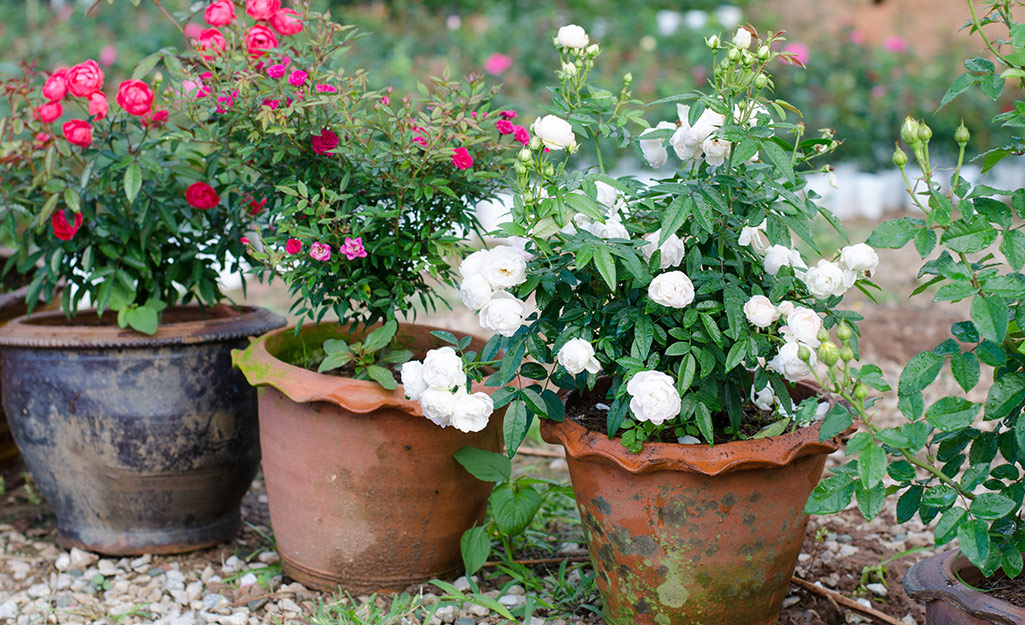When Is The Best Time To Plant Roses? 2024 Seasonal Guide
Wondering when to plant roses for the best results? This guide will help you choose the perfect season to plant your roses.
Sep 20, 202415.1K Shares303.5K Views

Roses have captivated gardeners for centuries, not just for their timeless beauty but also for their ability to transform any space into a stunning display of color and fragrance.
Planting roses at the right time is crucial to ensuring they thrive and bloom magnificently. The success of these beloved flowers starts with understanding the ideal planting window and preparing the soil and environment to give them the best possible start.
With careful timing and the right techniques, you can set your roses up for long-lasting health and abundant blooms.
When To Plant Roses
Planting roses at the right time is critical to ensuring their health and blooming potential. Roses planted too late in the season may struggle to establish roots, while those planted early have more time to grow strong before facing the challenges of summer heat.
Why Timing Matters
Roses planted at the wrong time may face environmental stress, making it difficult for them to establish healthy roots or adapt to their new environment. By planting at the optimal time, you give your roses a head start, allowing them to flourish.
Best Time To Plant Roses Based On Climate Zones
Planting time varies depending on your climate zone. Understanding when to plant based on your region ensures your roses will have the best start possible.
| Climate Zone | Best Time to Plant Roses |
| USDA Zones 3-6 | Early Spring (Feb-March) |
| USDA Zones 7-9 | Late Winter to Early Spring (Feb-March) or Fall |
| USDA Zones 10-13 | Late Fall to Early Spring (Nov-Feb) |
Planting Tips For Each Zone
- Cooler Climates (USDA Zones 3-6):Plant roses after the last frost in early spring to ensure they have enough time to establish before summer.
- Mild Temperate Climates (USDA Zones 7-9):Both late winter and fall planting work well. In mild winters, plant roses in February or March for the best results.
- Warmer Climates (USDA Zones 10-13):In warmer regions, plant roses between late fall and early spring, before the summer heat sets in.
By understanding your climate zone, you can plan your planting time to avoid extreme conditions that might damage young plants.
Benefits Of Planting Roses In Spring
Planting in February or March gives roses the opportunity to develop their root system before the arrival of summer heat. A well-established root system means healthier plants and more vibrant blooms.
Advantages Of Spring Planting
- Root Establishment:Roses planted in early spring have more time to grow and develop strong roots before summer.
- Less Stress:Cooler spring temperatures allow roses to adjust to their new environment without the stress of heat.
- Long Growing Season:Planting early gives roses the full growing season to mature, leading to more blooms throughout the year.
For best results, avoid planting roses that are already blooming in April or May, as they may struggle to adapt.
Preparing The Soil For Rose Planting
Soil preparation is crucial for the success of your roses. Whether you’re planting bare-root or container roses, the right soil conditions will help them establish strong roots and grow vigorously.
Steps To Prepare The Soil
- Clear the Area:Remove all vegetation, weeds, and debris to create a clean planting space.
- Turn the Soil:Dig the soil to a depth of 8-10 inches to improve aeration and allow root penetration.
- Add Organic Matter:Incorporate 4 inches of compost, well-rotted manure, or other organic material to enrich the soil.
- Test the Soil:Check soil pHand nutrient levels before planting. Add lime or sulfur to adjust the pH, and consider using bone meal or superphosphate to promote strong root growth.
- Water Before Planting:Lightly water the soil to ensure it is evenly moist.
This preparation ensures that your roses have the best environment to grow and thrive.
Choosing Bare Root Vs. Container Roses
Selecting the right type of rose for your garden depends on the season and your planting preferences. Both bare-root and container-grown roses offer distinct advantages.
Types Of Roses
Bare Root Roses
- Pros: Affordable, wide variety, easy to plant when dormant
- Cons:Must be planted quickly, require more initial care
Container Roses
- Pros: Can be planted any time, already growing
- Cons: More expensive, heavier to transport
Bare Root Roses
Bare-root roses are best planted in late winter or early spring. Soaking the roots in water before planting helps hydrate them, and planting them while dormant allows them to establish strong roots.
Container Roses
Container rosescan be planted year-round but do best when planted in spring or fall. They are already growing, which makes them easier to establish, though they may require more frequent watering after planting.
Where To Plant Your Roses
Choosing the right location for your roses is crucial to their health. Roses need plenty of sunlight, good drainage, and proper air circulation.
Ideal Planting Conditions For Roses
- Sunlight:Roses require 6-8 hours of direct sunlight daily. In hotter climates, some afternoon shade can help reduce stress.
- Drainage:Ensure good drainage by avoiding waterlogged soil. Consider raised beds or amending heavy clay soilwith compost to improve drainage.
- Air Circulation:To prevent fungal diseases, plant roses at least 3 feet apart from each other and other plants. This allows air to flow freely around the plants.
Proper location and spacing will help your roses grow healthy and resist common issues like black spot and mildew.
Growing Different Types Of Roses
Each type of rose requires slightly different care and growing conditions. Choosing the right variety for your garden ensures long-lasting beauty.
Types Of Roses And How To Care For Them
- Shrub Roses and English Roses:Ideal for mixed borders, these roses are hardy, repeat bloomers, and known for their fragrance.
- Climbing Roses:Perfect for walls, fences, and pergolas. Train them onto a support early to encourage upward growth.
- Rambling Roses:Vigorous growers that bloom once a year. They need plenty of space and are ideal for covering large areas.
- Patio Roses:Compact roses ideal for growing in containers. They need regular pruning to maintain their shape.
Understanding the specific needs of each rose variety ensures that you provide the right care for your garden.
Why Pruning Is Important
Pruning encourages healthy growth, improves air circulation, and helps prevent disease. It also keeps the rose bush looking neat and improves flowering by stimulating new growth.
When To Prune Roses
- Late Winter (Feb-March):Prune most rose varietiesduring their dormant season to remove dead or damaged wood.
- After Blooming (Ramblers):Prune rambling roses after their one-time bloom in early summer.
How To Prune Roses
- Cut above an outward-facing bud to encourage outward growth.
- Remove dead or damaged branches to improve air circulation.
- Thin out crowded stems to reduce disease risk and promote healthy blooms.
Watering, Mulching, And Fertilizing Roses
Maintaining healthy roses requires consistent watering, mulching, and fertilizing throughout the growing season.
Watering Tips
Water deeply once a week, especially during dry spells. Roses need moist but not waterlogged soil, so check soil moisture by inserting your finger into the ground—if it feels dry, it’s time to water.
Mulching Tips
Apply 2-3 inches of mulch around the base of the rose bush to retain moisture and regulate soil temperature. Mulch also helps reduce weed growth.
Fertilizing Tips
Apply a balanced fertilizer (such as 10-10-10) in spring and after each bloom cycle to encourage continuous flowering. Stop fertilizing six weeks before the first frost to avoid promoting tender new growth.
Frequently Asked Questions (FAQs)
When Is The Best Time To Plant Roses In Warmer Climates?
In warmer climates (USDA Zones 10-13), the best time to plant rosesis during late fall to early spring, typically between November and February. This gives the roses time to establish before the arrival of hot summer temperatures.
Can I Plant Roses In January And February?
Yes, planting roses in January or February is often better than waiting until April or May when they are already in bloom. Planting early allows the roses to establish their root systems in cooler, milder weather, making them more resilient to summer heat.
How Do I Prune My Roses In Spring?
In early spring (February-March), prune your roses by cutting back to healthy, outward-facing buds. Remove any dead, damaged, or diseased wood, and thin out crowded branches to improve air circulation.
What’s The Best Way To Transplant Roses?
The best time to transplant roses is during their dormant period, from late fall to early spring. Prune the rose before moving it, and make sure to dig up as much of the root ball as possible. Replant in a prepared hole with plenty of organic matter.
Conclusion
Planting roses is more than just a simple task - it’s an investment in the beauty and longevity of your garden. Each season will bring a new opportunity to enjoy the results of your careful planning and dedication.
Now is the perfect time to plant your roses and create a garden that will thrive for years to come. With the right care, your roses will not only grow - they will become a lasting symbol of elegance and beauty in your outdoor space.
Jump to
When To Plant Roses
Best Time To Plant Roses Based On Climate Zones
Benefits Of Planting Roses In Spring
Preparing The Soil For Rose Planting
Choosing Bare Root Vs. Container Roses
Where To Plant Your Roses
Growing Different Types Of Roses
Why Pruning Is Important
Watering, Mulching, And Fertilizing Roses
Frequently Asked Questions (FAQs)
Conclusion
Latest Articles
Popular Articles

